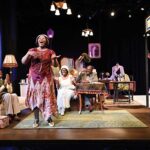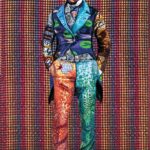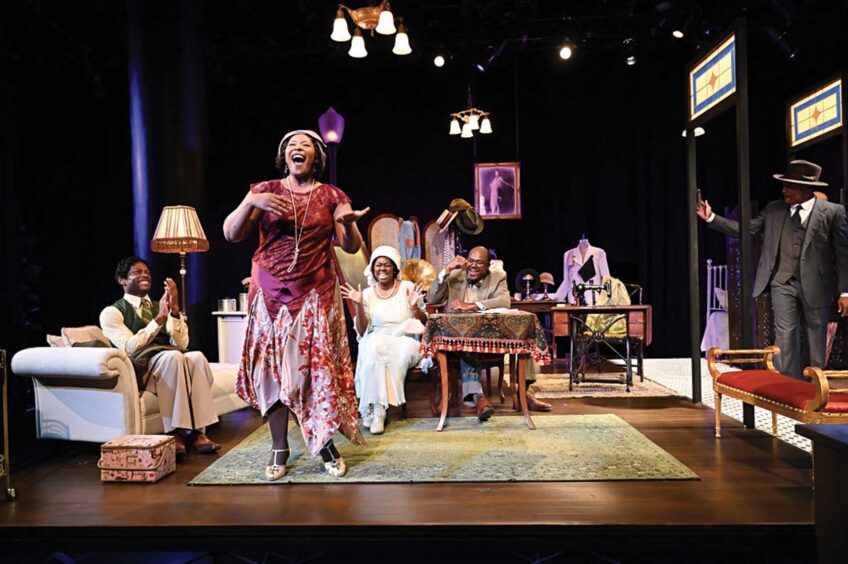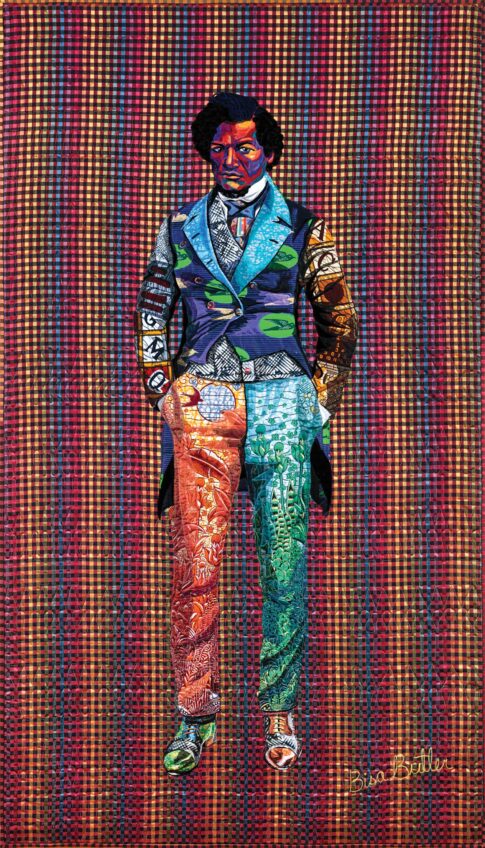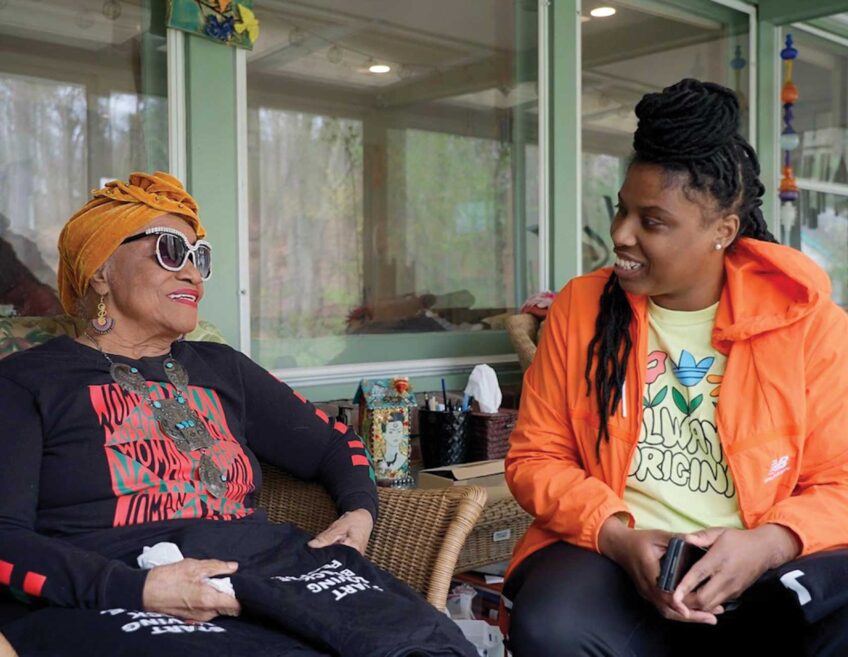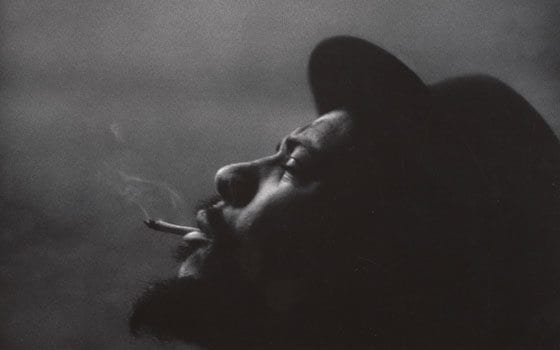


Author: AP /Copyright 1959, 2007 The Heirs of W. Eugene Smith/Center for Creative at the University of ArizonaThelonious Monk is seen at Hall Overton’s loft in New York in this 1959 photo provided by the Center for Creative Photography.
New Book Debunks Mythos of America’s Most Misunderstood Musician
In the apocrypha surrounding American impressionist music, the cult of personality in literature and film about pianist Thelonious Monk plays as a broken record.
According to some, Monk was monosyllabic, eccentric, danced in circles, and wouldn’t share sheet music with his sidemen. Kinder descriptions generally portrayed the so-called “High Priest of Bebop” as a childlike genius who abided in his own world.
In the biography “Thelonious Monk: The Life And Time Of An American Original,” University of Southern California professor Robin D.G. Kelley challenges these mixed views.
In this long-awaited portrait, Kelley captures the complicated man by exhaustive research that includes period interviews, rehearsal tapes, private film footage, contemporary reviews, and the recollections of club owners, managers, producers, nephews and nieces, sidemen and early fans. Based on Kelley’s work, it is clear that Monk was motivated by a devotion to family, artistic integrity, and critical recognition.
Early life
Born in 1917 in Rocky Mount, North Carolina, but reared in Manhattan’s San Juan Hill after the age of four, Thelonious Sphere Monk Jr. was raised largely by his mother Barbara in a New York community that was home to saxophonist Benny Carter, pianist Freddy Johnson, reed player Russell Procope, and early Duke Ellington trumpeter “Bubber” Miley, among others.
One of his early piano teachers, Alberta Simmons, played at World War I bandleader James Reese Europe’s noted Clef Club, where she befriended stride players Eubie Blake, James P. Johnson and “Fats” Waller. Her most famous student never forgot the role of stride play in shaping what the world would come to call “jazz.” “Stride” is an improvisational style developed by Harlem pianists in the 1920s in which the right hand plays the melody, and the left a four-beat pulse with a bass note.
Contrary to the common magazine portrayal of Monk as a musician unschooled in and thus untainted by the classics, he was also taught by Austrian pianist-violinist Simon Wolf. He learned — as any serious young student would have — the compositions of Chopin, Liszt, Bach, Beethoven and Rachmaninoff.
By age 13, he had developed a fondness for impressionist music as taught by Ms. Simmons, an ear for the European masters, and closer to home, a knowledge of the traditional Negro spirituals favored by his North Carolinian, church-singing mother.
His first group was a teenage trio in which two friends played trumpet and drums, at local dances, rent parties, and “Audition Night” (not to be confused with “Amateur Night”) at the Apollo Theatre.
Cutting sessions
In the early 1940’s, Monk was exposed to the early influential players during legendary “cutting sessions” in the apartment of piano giant James P. Johnson and at Minton’s Playhouse, the Harlem jam session hotspot. Those solo piano battles between accomplished stride players were as storied in musical circles as titanic one-on-one basketball duels or memorable hip hop ciphers became to New York residents later.
Many historians have described Minton’s as an experimental proving ground where the elite players attempted to embarrass their less gifted counterparts off the bandstand. In Dizzy Gillespie’s words “…we invented chords and tunes so…people we didn’t want to play with couldn’t just get on the bandstand…”
But in his book, Kelley found others who thought Minton’s was not exclusive but instead nurturing. Monk was one of them. “I was playing a gig…anybody sat in…if he could play,” Monk said. “I never bothered anybody. It was just a job…”
Throughout the text, Kelley’s research — and the recollections of family members and musicians — tear down the public persona that made Monk more celebrated for his supposed oddball demeanor than his craft. Though he suffered from what now might be diagnosed as bipolar disorder, Monk was a straight-arrow family man, and one of few artisans in his genre whose compositions became standards. By 1943, he had written one of those tunes, the dreamy “’Round Midnight.”
Though reports of unusual behavior regarding performance and punctuality on his part are nonexistent prior to his thirties, Monk sometimes used people’s preconceived notions to his benefit, perhaps even to become classified a “psychiatric reject” to avoid leaving music gigs to fight in World War II.
The pianist struggled to find work and compose hit tunes throughout the 1940’s, a decade highlighted by his mentoring of young pianist Bud Powell, his work with tenor sax leader Coleman Hawkins, and a stint in Gillespie’s band.
Be-bop
While most critics would later attribute the evolution of “bebop” (a term Monk deplored) to innovations by his peers Gillespie and saxophone ace Charlie Parker, Monk felt he was all too often not credited for his melodic approach, his stride influences and ability to think outside the lead sheet — as well as his body of composition.
By the end of the decade, he had contributed “Off Minor,” “Epistrophy,” “Evidence,” “I Mean You,” “In Walked Bud,” “Ruby My Dear,” “Rhythm-a’ning,” and “Well You Needn’t” to what would become the international songbook of the genre. This period also saw Monk seriously enter the studio for the first time- his productive “Blue Note Years.”
Ever the loyal friend, Monk served two months in jail, and lost his all-important cabaret card, the I.D. required of performers to ply their trade in Manhattan clubs which served alcohol, rather than testify that the narcotics police found on the floor of a parked car belonged to Bud Powell.
Monk went on to record successfully for Riverside Records, where he never thought much of producer-co-founder Orrin Keepnews. Another big break came when he led a band at New York’s popular Five Spot café, where his sidemen included budding tenor sax man John Coltrane.
A year later, Monk suffered one if his worst encounters with law enforcement. A Delaware cop beat him when Monk refused to speak after a traffic stop involving members of his quartet outside a Bentley driven by wealthy music patron Baroness Pannonica “Nica” de Koenigswarter.
Unbeknownst to Monk, his father was confined to a North Carolina sanitarium for negroes and suffered from mental illness that would affect Monk. Associates and relatives differ on Monk’s most severe emotional decline, but depression brought on by the deaths of his mother, his nephew Ronnie, and sidemen and friends Ernie Henry, Elmo Hope, Sonny Clark, Bud Powell, John Coltrane and in the late 1960’s his early employer Coleman Hawkins — all helped push him into periodic silences and erratic comportment.
When interviewers asked Monk about his reputation as an undependable gig leader, Monk often defended himself by saying unscrupulous club owners sometimes used his name in false billing to attract an audience, and then complained when the pianist did not show for the fabricated date.
Monk University
Historians, scholars, players and fans will find Kelley’s work a seminal examination of the man and his music. The creative process behind some of the most familiar compositions unfolds through private recordings of rehearsals and tapes his bandmates made of successive nights during the same tours. From those who had to learn the oeuvre come recollections of the complexity and genius of the harmonies, the manner in which he taught them (more by ear than by sight reading) and the consensus that when one enrolled in “The University of Monk,” the curriculum was post-graduate.
Player after player recount how their musical knowledge expanded when they rehearsed his material. Despite contemporary media implications, musicians, and his nieces found Monk not only witty, but also interested and conversant in current events, nature, and philosophy.
He appreciated the classics, was deeply concerned about the Civil Rights Movement, and had a yen for fashion — especially his trademark hats. His apartment became a hangout for aspiring players. He served as a mentor to Randy Weston, Bud Powell, Art Taylor, Jackie McLean, and Sonny Rollins. As a father, he sought the best private schooling for his children. Monk the husband was inseparable from wife Nellie. Innuendos about extramarital trysts with Baronness de Koenigswarter are not only false, but Nellie was generally present at rehearsal sessions or relaxed visits to Nica’s Weehawken, New Jersey home.
By approaching his subject with an open mind, and garnering the respect to be the first scholar with full access to Monk’s widow, closest family members, friends and colleagues, Kelley has produced his own American original, the first effort that embraces all 360 degrees of Monk.
Bijan C. Bayne is a cultural critic and frequent Bay State Banner contributor.

